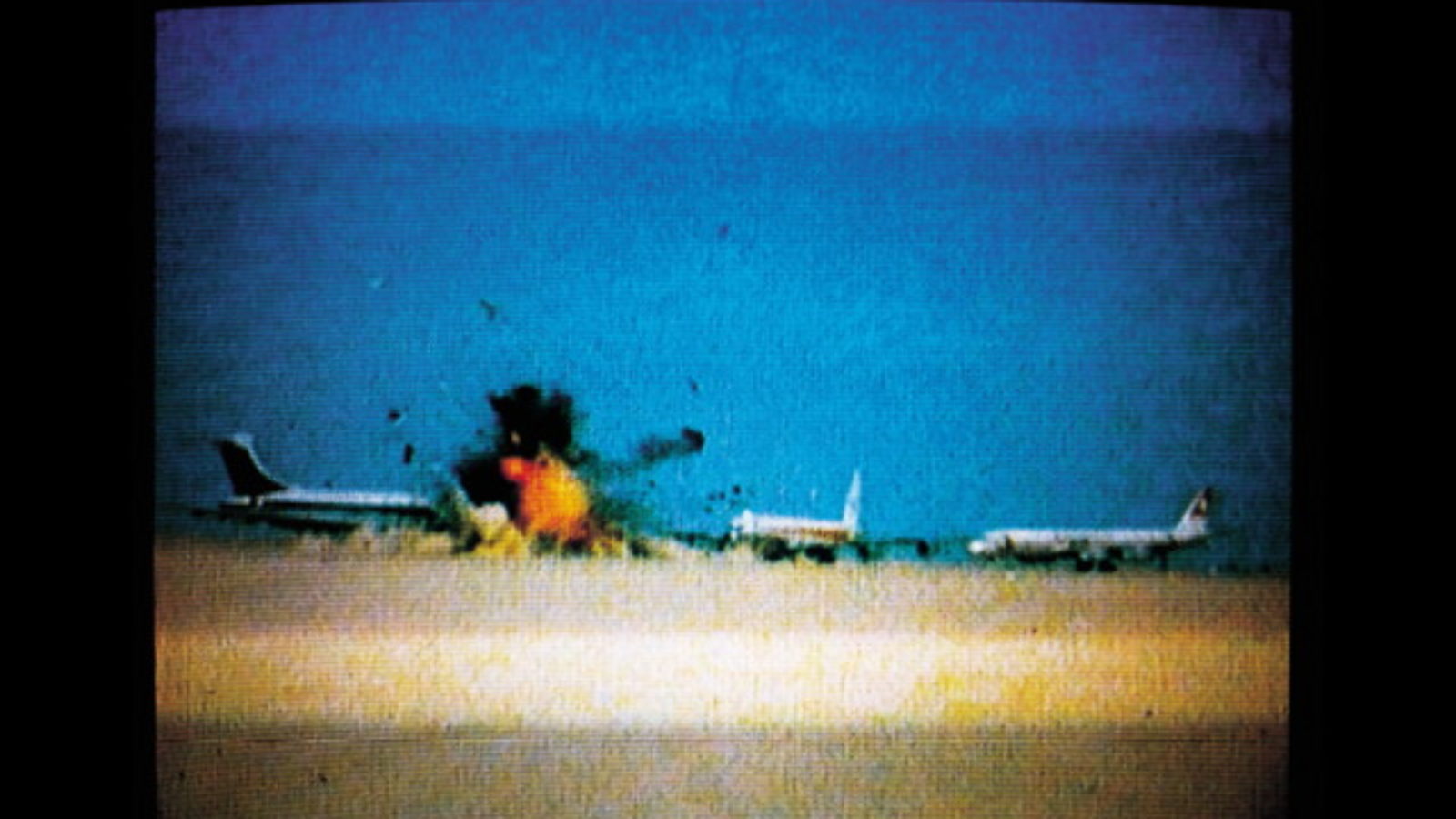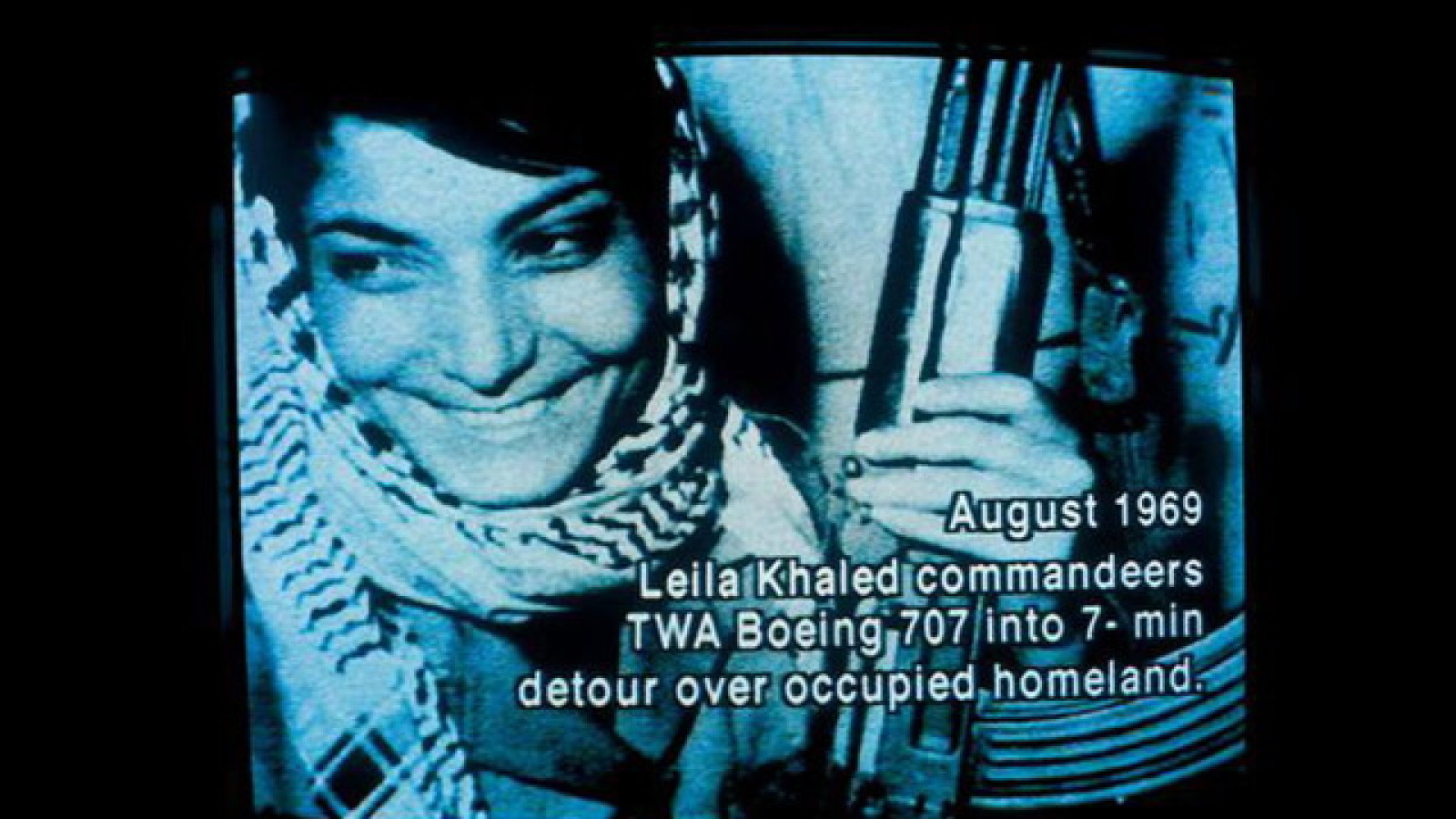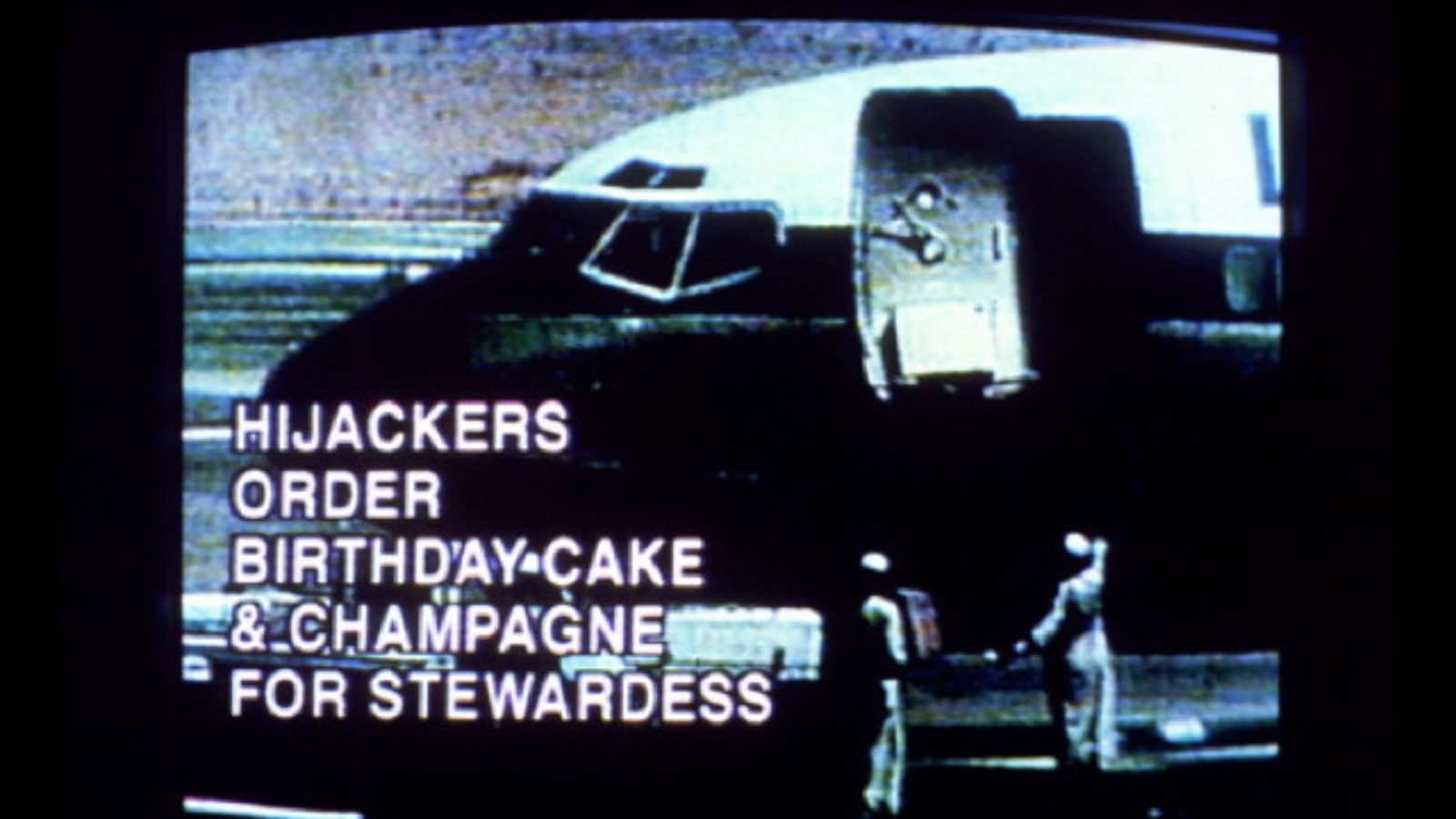Print Screen: Tom McCarthy
On the occasion of the publication of his latest novel, Satin Island, the writer and artist Tom McCarthy will introduce and discuss a double bill of Dial H-I-S-T-O-R-Y (1997), Johan Grimonprez’s essay film on the history of airplane hijackings, and Antony Balch and William S. Burroughs’s seminal collage film Towers Open Fire (1963). The author of some of the most acclaimed and intellectually provocative books of recent years—Zadie Smith called his debut, Remainder, “one of the great English novels of the last ten years”—McCarthy bridges the worlds of literature, art, and cinema as few others do today, blurring the distinctions between conceptual art, philosophy, and the avant-garde novel.
Both these films fascinate me. I’ve been lucky enough to know and work with the director of one of them; of the other’s I’ve been a fan since as long as I can remember. Key landmarks in the history of a collage aesthetic (mutating at exponentially increasing speed and by definition self-consuming) running from Situationist cinema through MTV and on to YouTube, they navigate a hybrid zone formed from the overlay of essay and fiction, anthropology and poetry and politics. They understand that media is itself a site of struggle, and that all art either incubates or keeps at bay (or both) a type of violence. Most fascinating of all, they send the writer, as a cultural agent, down a path whose trajectory runs parallel with that of the terrorist, eyes madly fixed on the infinity-horizon where these two lines meet. —Tom McCarthy
Dial H-I-S-T-O-R-Y
Johan Grimonprez, Belgium, 1997, digital projection, 68m
Archival footage of aircraft takeovers and passages from Don DeLillo’s Mao II commingle to form a dialogue between a writer and a terrorist in this provocative comment on image saturation and the media as the ultimate hijacker.
Screening with:
Towers Open Fire
Antony Balch, UK, 1963, 35mm, 10m
Written by William S. Burroughs in the style of his Dadaist cut-up novels and edited in like fashion, Towers Open Fire presents a collage of chemical and visual hallucinogens to the tune of Burroughs’s own croaking ruminations.
McCarthy’s work has been translated into more than 20 languages. Remainder, which deals with questions of trauma and repetition, won the 2008 Believer Book Award and is currently being adapted for cinema. His third, C, which explores the relationship between melancholia and technological media, was a finalist for the 2010 Booker Prize. McCarthy is also author of the 2006 nonfiction book Tintin and the Secret of Literature, an exploration of the themes and patterns of Hergé’s comic books; of the novel Men in Space, set in a Central Europe rapidly disintegrating after the collapse of communism; and of numerous essays that have appeared in publications such as The New York Times, the London Review of Books, Harper’s, and Artforum. In addition, he is founder and General Secretary of the International Necronautical Society (INS), a semi-fictitious avant-garde network of writers, philosophers, and artists whose work has been exhibited internationally at venues including the Palais de Tokyo, Paris and Tate Britain. He is also the writer of Johan Grimonprez’s 2009 film Double Take, in which a fictitious version of Alfred Hitchcock encounters his double during the making of The Birds. In 2013 he was awarded the inaugural Windham-Campbell Prize for Fiction by Yale University. McCarthy’s new novel, Satin Island, published in February 2015, concerns a corporate ethnographer compiling a “Great Report” on the contemporary moment. Special thanks to the British Council for travel support.









